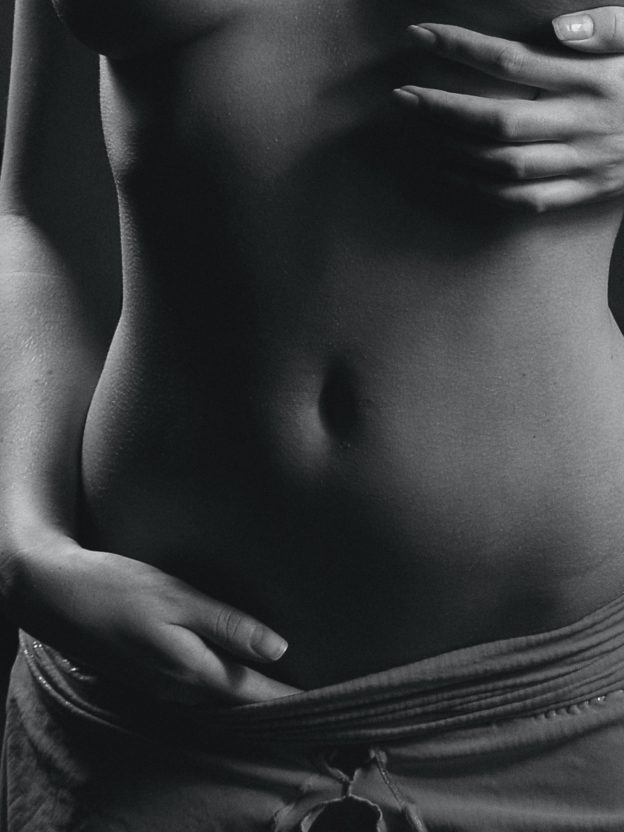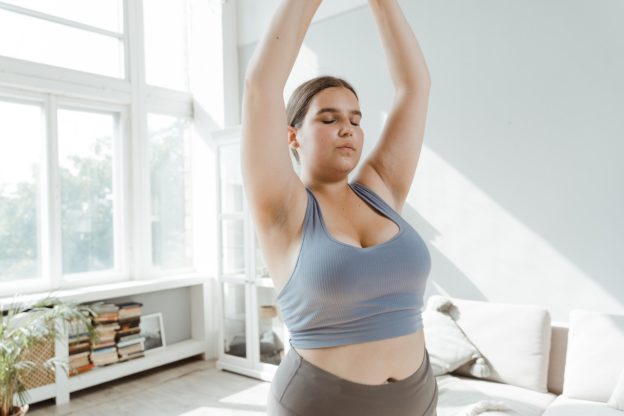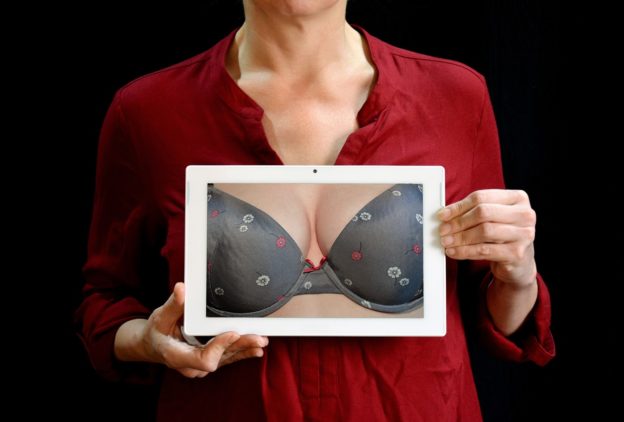The Appearance of Post-Op Tummy Tuck Scars Can Be Improved Greatly With These Tips
If you recently had a tummy tuck operation, or you are thinking about getting a tummy tuck, you probably have questions about scarring. Although you want a slimmer stomach, nobody wants big scars after an operation. Especially if the operation is supposed to make you look better, not worse. Tummy tuck scars are visibile for some time after surgery (discussed below) but there are some things you can do to lessen them and ensure they improve and become hardly visibile over time.
With any surgery, especially plastic surgery, it’s extremely common for patients to have questions about the scars. In this article, we’ll go over everything you need to know about the tummy tuck scar.
What is a Tummy Tuck?
An abdominoplasty, or tummy tuck, is a surgical operation that takes out excess skin and fat around the abdomen. Tummy tucks are commonly combined with liposuction and muscle tightening for better results. Tummy tucks result in a slimmer, leaner, and smoother abdomen.
As many people, particularly women, look to have a slimmer, smoother abdomen, it’s no surprise that the tummy tuck is one of the most common cosmetic procedures performed in the United States. According to the Aesthetic Society, there were over 140,000 tummy tucks performed in 2019. Since then, this number has increased even more.
Although getting a tummy tuck is a relatively simple procedure, it’s natural to have questions about visible scars. Below, we’ll dive into what you should know about tummy tuck scars.
Tummy Tuck Scars
Like any surgical procedure, tummy tuck procedures involve an incision, and therefore, scars to some degree are unavoidable. The visibility, size and healing process of the scar you have to deal with after a tummy tuck depends on the type of tummy tuck performed by your surgeon. Let’s briefly discuss those so you know what type of tummy tuck scars you’ll have after your procedure.
Types of Tummy Tucks
The location and size of the tummy tuck scar depend on the type of tummy tuck your plastic surgeon gives you. Regardless of the type of tummy tuck, your surgeon will likely use a special adhesive, tape, or bandages on your incision. This will simultaneously hold the incision together and keep it moist so that it heals well and the scars are minimal.
Full Tummy Tuck
The full tummy tuck is considered a standard tummy tuck. The incision scar spans from one hip bone to the other above the pubic area, spanning your lower abdomen. There may be an additional incision scar around the belly button.
Mini Tummy Tuck
If you have a small amount of skin and fat below your belly button, your plastic surgeon will likely recommend a mini tummy tuck. The mini tummy tuck scar is smaller than a full tummy tuck scar, usually between three to six inches in length.
Fleur-de-lis Tummy Tuck
If you have a significant amount of extra skin from multiple pregnancies or major weight loss, the fleur-de-lis tummy tuck may be the best option for you. Similar to the full tummy tuck, one incision scar will span your abdomen. However, unlike the full tummy tuck, a second vertical scar runs down from the breastbone to your pubic bone.
Can You Avoid Tummy Tuck Scars?
As we mentioned, scarring to some degree is inevitable. That being said, ensuring your wound heals properly will result in smaller scars. Follow these steps to reduce tummy tuck scars:
Avoid corticosteroids
If you’re prescribed corticosteroids, speak with your healthcare provider before the surgery. Some corticosteroid medications can slow the process of wound healing and result in worse scars.
Manage chronic diseases
Some chronic conditions, like diabetes, can inhibit proper wound healing. If you have a chronic disease, talk to your healthcare provider before the surgery. They will help you manage your condition, and promote wound healing, before, during, and after the tummy tuck procedure.
Take vitamin A supplements
When you speak to your healthcare provider before your surgery, they may suggest that you take vitamin A weeks or months before your procedure. This is because vitamin A can accelerate wound healing. However, it’s important to speak with your cosmetic surgeon about taking vitamin A, because it could interfere with medications.
Stop smoking
This is an especially hard step for smokers. However, smoking can inhibit your body’s natural ability to heal properly. Therefore, if you want to minimize scarring, you should quit smoking months before the surgery.
How to Help the Healing Process After Your Tummy Tuck
In addition to following the steps above before your surgery, there are some additional things to keep in mind after the surgery to speed up the recovery and help your scars heal faster.
Follow your surgeon’s post-op instructions
Your surgeon will give you a list of detailed instructions that will help tummy tuck patients to heal after the surgery. It’s extremely important that you follow these instructions so that you can allow your scar to heal properly and avoid making it worse or allowing it to open back up.
These instructions will include steps to care for and clean your wound. Doing so will expedite recovery and result in tummy tuck scars with a smaller appearance.
In addition, they’ll list some things to avoid after the operation. For example, they will tell you to avoid any heavy lifting, including grocery bags. Also, stay away from any strenuous exercise, stretching, or sexual activity. Engaging in these activities could stretch out your skin and cause your scar to reopen. Not only will this impede the healing process, but it could cause infection.
Topical treatments
In addition, your doctor will recommend some topical treatments that will keep the scar clean and moist. Common topical treatments for tummy tuck scars include the following scar creams:
- Scar cream
- Antibiotic ointment
- Cocoa butter
- Silicone gel sheets
- Vitamin E & D
Scar massage
Approximately 2 to 3 weeks after your tummy tuck procedure, you can try a scar massage. Done right, many patients find scar massages can increase blood flow to the area and help the wound heal faster. Also, it can break up some of the tougher tissue to make the scar smaller. Using your fingers, gently massage the scar tissue and the surrounding skin. Make sure to speak with your doctor before you try the scar massage.
Stay out of the sun
Sunlight is packed with ultraviolet radiation, while this may be good for tanning, it’s very bad for tuck scars. Similar to tanning skin, sunlight exposure can make scars turn a darker color. Also, avoid tanning as it can make the scar tissue thicker, changing its texture.
Therefore, keep your visible scar out of the sun until the scar is completely healed and faded, which usually takes between a year to a year and a half. If you’re going to be out in the sun, use sunscreen with an SPF of 30 or greater. Also, if you’re wearing thin clothing, consider putting sunscreen on the scar underneath.
Eating right
Eating right and giving your body the nutrition it needs to promote healing is also a big part of reducing scar tissue. Speak with a dietician or your healthcare provider about a diet that will prioritize the vitamins and minerals you need for optimal wound and scar healing. It may be as simple as taking a supplement once a day.
Tummy Tuck Scar Treatments
Along with these steps to reduce scar buildup and promote healing, there are some treatments that you can have after the tummy tuck scar heals to make the scar smaller.
Steroid injections
Steroid injections can be given at the time of the tuck surgery or a few weeks after the procedure. Steroid injections are generally used to treat abnormal scarring. They can reduce the appearance of thick, red, or raised tummy tuck scars.
Laser skin resurfacing treatment
Laser skin resurfacing is another treatment that can reduce the appearance and size of a tummy tuck scar. However, this treatment is also generally used for abnormal scarring. This treatment uses lasers to stimulate the growth of new skin cells.
This treatment can:
- Reduce pain, irritation, and itchiness in and around the scar.
- Prevent a raised scar from developing.
- And decrease the tightness of the scar, giving you more mobility.
Scar revision surgery
Certain scars, like keloid scars or hypertrophic scars, may require an additional surgical procedure to treat. Scar revision surgery is a procedure where the surgeon removes the scar from your skin and stitches the incision.
Usually, scar revision surgery isn’t performed until at least a year to a year and a half after the original surgery. After this time, the scar should have mostly faded and the skin should have loosened somewhat around the scar.
Find a Tummy Tuck Specialist through Surgeon Network
Whether you have a little bit of excess fat and skin you want to get removed, or you have significant tissue from weight loss or pregnancies, you should speak with a plastic surgeon. Even if you are just considering the idea, speaking with a plastic surgeon will help you to understand both the procedure and healing process better.
Surgeon Network is a company that is devoted to connecting patients with high-quality plastic surgeons. We have over 150,000 surgeons listed in our network, ranging from cosmetic and plastic surgery to hair restoration.
Surgeon Network will help you to find the right medical professional near you. Finding a well-qualified and experienced cosmetic surgeon is the best way to reduce scarring. Because the best surgeons use as small and few incisions as possible. Also, they will help you along the way as you recover to further ensure your scars heal and fade as quickly as possible.
With the SurgeonNetwork.com directory, you can search the directory by specialty and city to find a highly-rated plastic surgeon.













